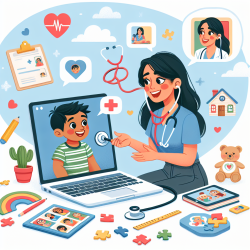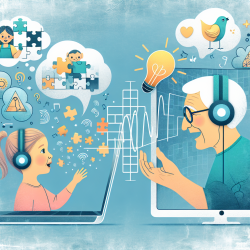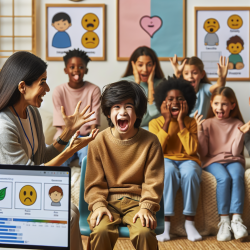The research article "Internet videoconferencing for patient-clinician consultations in long-term conditions: A review of reviews and applications in line with guidelines and recommendations" presents valuable insights into the growing role of internet videoconferencing in healthcare. As practitioners dedicated to improving child therapy outcomes, understanding and implementing these findings can significantly enhance our service delivery. Here's how:
Key Findings from the Research
The study highlights several critical points:
- Patient Satisfaction: Internet videoconferencing is generally well-received by patients, offering a satisfactory alternative to face-to-face consultations.
- Health Outcomes: While there is limited evidence that videoconferencing directly improves health outcomes, it provides a feasible and acceptable mode of communication.
- Professional Acceptance: There is a lack of substantial data on healthcare professionals' satisfaction with videoconferencing, indicating a need for further research.
- Cost and Safety: More data is needed to understand the cost-effectiveness and safety implications fully.
Implementing Findings in Child Therapy
Given the positive reception from patients, incorporating internet videoconferencing into child therapy practices can offer several benefits:
- Accessibility: Videoconferencing can make therapy more accessible to children in remote areas, reducing the need for travel and ensuring consistent care.
- Flexibility: This mode allows for flexible scheduling, accommodating the busy lives of children and their families.
- Comfort: Children may feel more comfortable engaging in therapy from their home environment, potentially enhancing their responsiveness and engagement.
Challenges and Considerations
While the potential benefits are clear, there are challenges to consider:
- Technical Issues: Ensuring a reliable internet connection and familiarizing both children and parents with the technology are crucial steps.
- Privacy and Confidentiality: Safeguarding the privacy of the child and maintaining confidentiality during sessions are paramount.
- Professional Training: Ongoing training for therapists on the effective use of videoconferencing tools is essential.
Encouraging Further Research
To optimize the use of internet videoconferencing in child therapy, further research is needed in several areas:
- Long-term Outcomes: Studies focusing on the long-term impact of videoconferencing on child therapy outcomes are necessary.
- Cost-effectiveness: Comprehensive analysis of the cost implications for both providers and patients will help in making informed decisions.
- Ethical Considerations: Research exploring the ethical aspects of videoconferencing in therapy settings will ensure safe and effective practice.
In conclusion, integrating internet videoconferencing into child therapy offers promising advantages, enhancing accessibility, flexibility, and comfort for children and their families. By addressing the challenges and encouraging further research, we can ensure this mode of therapy becomes a valuable tool in our practice.
To read the original research paper, please follow this link: Internet videoconferencing for patient-clinician consultations in long-term conditions: A review of reviews and applications in line with guidelines and recommendations.










